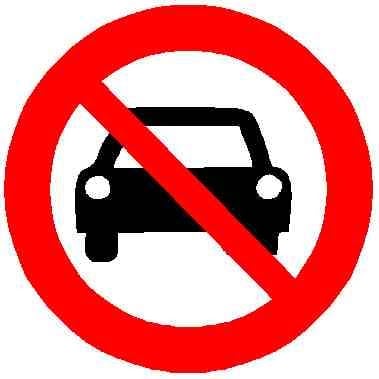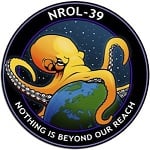Walkable and bikeable, please. While it is nice to be able to exercise and explore, sometimes I just need to transport a few bags worth of groceries, and carrying bags for over an hour is not fun.
I’ll take a bike and some pannier bags please.carrying bags for over an hour is not fun.
I hate to break it to you, but if you have to walk an hour to buy groceries you’re not living in a walkable city.
If it’s an hour to the grocery store I don’t think that’s walkable either
an hour to walk to the grocery store is about 10 minutes on a bike. Just get a backpack to carry things.
Yeah, that’s bikeable, but not walkable
A walkable city means everything, including the grocery store, is a conveniently walkable distance away, which would automatically make it bikeable, too. An hour’s walk to the grocery store does not a walkable city make.
I feel it’s hard to find places which are walkable but not bikeable (outside of the USA)
A walkable grocery store is at max a 10-15 mins from the house (in my opinion). This allows you to just pop in and buy stuff while coming from the public transport stop without having to schedule big trips for the entire week/month.
i feel like there’s a general tendency for people to mean different things when they say “bike”, some people think dutch-style cycling where high gears are something you use when you’re late for school, other people think more like road biking where low gears are something you begrudgingly resort to when you encounter a steep incline.
slow cycling is perfectly compatible with pedestrian places so long as it isn’t like a medieval alleyway, but fast biking is going to end up with people getting bruises.
Fast cycling isn’t really compatible with walkable culture. It needs some level of infrastructure for separation (lanes, lights, crossings, etc) to prevent collisions. I don’t understand the fascination with fast cycling for anything except for sports, exercise or long distance travel.
Slow cycling and walking don’t need any such infrastructure and that’s commonly considered as a walkable area. It brings roughly 1 km radius in a 5-10 minute zone and that’s enough area for at least 60-70% of required facilities (school, police station, fire station, hospital, groceries, bakery, shopping, transit stops).
and here i feel we’ve overcorrected.
Fast biking is absolutely fine (i have an e-bike, it’s very nice) and doesn’t require any insane infrastructure, just some wider straighter bike paths between more significant and far apart destinations.like i’m sorry but i’m not gonna bike to the next town over at 15km/h, and those routes aren’t going to have lots of pedestrians.
A big road having bike lanes is perfectly fine. Moreover it’s encouraging to see people talking of putting bike lanes for commuters. But that’s a bikeable area, not a walkable one. And these 2 make sense in diff situations.
As long as kids and old people are able to walk or slow cycle most places, unsupervised (in a 20-40 minute radius around their homes), I’m happy with that. A place suitable for these 2 demographics is walkable for almost everyone else as well.
I’m not sure dutch biking is a good example for slow biking. A lot of bikes here in the Netherlands are e-bikes these days, and even without e-bikes people tend to be quite fast, especially on main streets that go straight for a while.
But then, most streets have bike lanes, and cars are very bike aware in streets that don’t. Pedestrians and bikes don’t share the same space.
I remember some comment somewhere on lemmy about e scooters being too slow (it was 10 or 15 km/h?) so they shouldn’t be in a bike lane and all I’m thinking is “I wonder if I exceed 5 km/h on my bike when there’s strong headwind” lol
dutch-style cycling where high gears are something you use when you’re late for school
Where I lived in the Netherlands there often were electric bikes and scooters and sports bikes going 30+kph on the bike lanes.
Text:
Walkable cities sneak exercise into daily life. Coffee runs, grocery trips and commutes turn into steps that boost dopamine, mood and energy.
Car dependent cities keep you parked in traffic and at desks, fuelling sedentary habits linked to depression and cognitive decline.
Walkable cities invite chance encounters. Smiles on sidewalks, quick chats with neighbours and local shop hellos build connection and fight loneliness.
Car dependent cities keep people alone in cars and homes where isolation quietly chips away at mental well being.
Walkable cities give you options to stroll, bike or take transit. Less car dependence means less traffic stress, more freedom and calmer mornings.
Car dependent cities lock you into unpredictable commutes, noise and road rage that spike cortisol and strain mental health daily
Walkable cities weave green parks and trees into everyday life. Nature exposure lowers stress, improves focus and lifts mood.
Car dependent cities replace trees with asphalt and noise, pumping out pollution that can worsen anxiety, irritability and cognitive performance.
Walkable cities naturally promote activity, connection, calm & nature which are all protectors of mental health.
Car dependent cities lead to more isolation, stress & less movement.
How we build cities is not just transport planning. It needs to consider mental health planning.
Yes but also a walkable city has to be a sitable city! I’m not about to enforce extra unneeded walk time under the climate change summer sun to an elderly person who enjoys the pleasure of irreversible knee damage that the state did not want to solve nor even palliate.
Yes, there will be plenty of place for outdoor seating space and shade from trees and water and stuff once there no cars in the cities (and countries). Also good public transport if it’s a bad knee day.
I was staying near Austin, tx a while back. We wanted to get some fast food at like 2am, so we chartered a shuttle for like $5 for a round trip to a 24hr joint. And we probably could have walked! Its insane what good public transport can do.
Live in a highly walkable city; can confirm.
Twitter is such shit. who types that much with character limits. can’t even be bothered to read that broken mess of posts
I still sometimes ask myself what was wrong with the web forum that it needed to be replaced by modern “social media” formats…
Corporate profits and control of speech, obviously!
/sarcasm
I’m guessing the sarcasm is because in truth that’s only part of the answer instead of the whole answer? or does the sarcasm signify that it’s none of the answer?
there’s def many reasons why shitty social medias won out, and you certainly named one of them, sarcastically or not. others may include: dopamine driven content, marketing successes, corporate collaboration, random chance, that one media effect that has a name but is basically survivorship bias, and so on
I’d say too sparse and no user friendly mobile app. Having your friends all in the same place and being able to join them just by downloading an app using an already available store on your phone does wonders
What are top five best walkable cities in the US that are also affordable?
They’re not affordable, sadly. Walkable cities are so amazingly great that people will pay a lot of money to live in them. And they have to, because the demand is huge, but they’re illegal to build, so the supply is tiny.
In short, Americans are dumb.
I’m not sure I could name 5, period
What I was afraid of. Walkable cities is a great a noble thing. It just sucks we aren’t making those in America.
It’s all relative. Some cities are more walkable than others. Declaring the entire US to be so unwalkable you should give up comparing them is letting the perfect be the enemy of the good.
bear in mind that american “cities” are basically small countries, i’m sure there’s at least a hundred “towns” or districts of “cities” that are walkable and affordable, but the “cities” are so stupid huge that they have a bunch of variation in them.
Pennsylvania’s got you covered with Pittsburgh and Philly.
Pittsburgh has great walking but its transit is quite limited. Philly has good transit (for USA).
Both very affordable compared to other cities.
Chicago is pretty similar to Philly in terms of affordability, walkability and transit.
Chicago is really affordable for its size IMO. At least comparatively I guess.
Pretty sure walkable cities also have desks, but the rest is solid.
Sure, but walking/biking to the local rapid station to then walk to your job is much better than taking 24 steps from your home to your car. And then if you decide to go out for lunch at work, you can walk a block over to a cafe or deli and then walk back. If you have a local produce shop that’s a 15 minute walk from your home, you will likely prefer walking out there 3 times a week for groceries than driving out to a grocery shop once a week. Lots of little walks and rides add up to make you much healthier than the sedentary lifestyle encouraged by suburban life.
I agreed with everything else, just found the inclusion of desks to be silly.
Leaving my house which has a desk and Internet connection to go to a place with a desk and an Internet connection sounds ridiculous.
Nope, in walkable cities all desks have little treadmills under them.
Trying to decide if these could have data backing them up. Clearly if you look at people who walk/bike to work in our current cities, they will be healthier. But I would assume this is a selection effect? And probably not much less lonely? I was under the impression that loneliness was high everywhere.
Curious if transit systems really are more reliable than the typical car commute. I’ve certainly had missed connections, bus breakdowns, and people jumping in front of trains.
And I didn’t follow why a walkable city will have more green spaces. Surely in a capitalism we’ll still have strong pressure to fill most of that.
And I didn’t follow why a walkable city will have more green spaces. Surely in a capitalism we’ll still have strong pressure to fill most of that.
Well yes, but a walkable city is already something that doesn’t really align with hardcore capitalism. And if your goal is a walkable city, then you need to make it enjoyable. Most people don’t enjoy walking through endless grey.
Although yes, in Europe, city leaderships that care about that are usually on the left side of the political spectrum.
Point is, a walkable city has no advantage to capitalism. So it’s a safe assumption that a leadership pushing for it is not really that capitalist.
It’s not really a “walkable” city if you are getting ass-blastes by the sun in the middle of summer. My small town is definitely a walkable city and has trees lining pretty much every street since something has ro go between the road and the sidewalk.
Trees are ideal because they:
- Will stop a car dead in its tracks if it drifts towards the sidewalk Produce shade to keep the surrounding area cool Are natural sound insulation (my town is on a busy cargo rail line and i never hear trains in the summer, but hear them frequently in the winter when the trees are bare) reduce pollution and increase air quality
Any town that is trying to become more walkable will put trees everywhere they are a cheap and easy way to make everything more pleasant.
The most walkable place I’ve lived in had pretty sparse greenery (to be fair, it was quite north). Shade from the sun comes from the residential and commercial buildings stacked high, with relatively narrow streets and alleyways.
I agree trees are great. Just not obvious to me that more walkable designs necessarily include them.
I’m along the south shore of Lake Erie, so trees are a godsend in my town in the summer. I live a block away from the main downtown in a west facing apartment. My apartment would absolutely fry in the summer if it wasn’t for the massive maple tree outside my apartment shading the place. The trees downtown aren’t very large, but if the city were to get rid of the on street parking downtown and focus on pedestrianizing the area, they could absolutely grow some beautiful oaks to offer shade at noon in the summer. They make being outside more pleasant, and if being outside is pleasant, people are going to walk more. My parents live in a 10 year old suburb in Houston with non-existent tree cover and it makes day time walks a
Also, just because i want to keep talking about how much i love my little walkable city, the city government recently started a program where if you have a patch of dead grass/gravel on the roadside next to your home, they will come out and plant a tree there. Residents are also able to take yard trimmings to the waste treatment plant in town and receive free mulch on a first come/first served basis.
That’s wonderful! I was amazed at how green and alive everything was when I went through Michigan, despite getting so dark in the winter.
I agree towns could put in more park space, but they could also put in more seating for restaurants, shops or water features, public service expansions, warehouses, housing, and so on. A good city will split between them, and common green spaces will show up. I’m curious what the range of ratios look like (especially over time).
And my city has a bunch of parking lots scattered aroun town, so it’s not like they need the street parking, PLUS, this is MAGA country so everyone is driving massive trucks that can’t parallel park anyway. But if you threaten to take away a parking space, people freak out. But people freak out whenever you propptany change, so might as well do something that has been shown to improve everyone’s quality of life.
It’s very difficult to take these questions/criticisms seriously when I live this everyday
That’s great! I’m imagining a data-is-beautiful chart showing the positives. Do you have/know of data on them from your neighborhood/town?
Well, when you put it that way
Thank you for sharing.
Wish I could invite twice
Yes, nice thread with so many different people and opinions in it. Very nice, indeed.
This sentiment is great, but I have 2 dogs, and play loud drums, and have loud dirt bikes…neighbors would hate me.
Walkable towns / cities doesn’t have to be high density housing, just means you need actual sidewalks and public transportation.
Oh, i see! I do wish I had a bike trail near me. Damn impossible to bike without about getting ran over.
On the metro in my city, the dogs are better behaved than the humans, and the drummers get tips. You could just ride your dirt bike to places instead of transporting it on a truck.
I agree. But for me is to have many more options around walking cities, but they should not forced to everyone.
so long as you’re willing to pay the actual cost of such a lifestyle, but unfortunately you’re almost certainly not doing so, because if you did you’d be complaining about how expensive it is.
I have enough as it is. I’m just trying to put in perspective why some people see this as unlivable conditions for them. You can’t put an outdoorsy family of 5 in a tiny apartment.
Look, I do like living in a pedestrian-only street in a town you can easily work across and being in a car maybe a handful of times a year.
But please spare me the terminally online health guru pitch. Every part of that post sounds atrocious to me. The exoticization alone makes me want to move back to a major city. I don’t go to the shop next door for smiles and chance encounters, I go because they have the nice cookies. I don’t go at all if I can help it because pants are still evil in “walkable cities”. Do please get off it.
If you go to the same bakery once a week, you eventually start recognizing people, and people there recognize you. You aren’t goin to a shop to meet people, it’s just a happy side effect of having a regular routine like that. When you keep seeing the same person over and over again, you may end up wearing a shirt that they like and it becomes a conversation and you have a new connection to your community. Walkable communities encourage relationship building of various types while car dependency forces us into social isolation.
I can tell I’m going to have a hard time explaining why that little narrative you constructed rubs me the wrong way, but I’ll give it a shot.
Yeah, I absolutely talk to the same people every day or week, but it’s not some special little mental health break I get, it’s just how stuff works. The chances of that being a nice bit of social interaction you like or an oppressive thing that makes you feel trapped or socially awkward are about 50-50, and seeing people from other backgrounds or environments romanticise it feels kinda patronizing or… touristy? Touristy is a word.
Does that make sense? Living in a small place or a place where you walk to your daily errands isn’t magic or a whimsical simple life, it’s just how stuff works in some living arrangements, and it has upsides and downsides. Car-first cities suck and I wouldn’t move to one, but it’s not because I live in some endless episode of Cheers that’s keeping me mentally healthy.
I live in a small, but dense, rural town in the Midwest. It has it’s problems, but there is a better sense of community here than any of the half dozen suburbs i grew up in, mostly because most of the homes are within walking/riding distance of a thriving little downtown. Some people are shut-ins who don’t want to mingle, and that’s fine. Some people i see regularly i have never talked to. There are even people in town who i hate, and others who hate me. The whole point of the OP is that small and walkable communities are how humanity evolved and has existed up until 100 years ago, and study after study has shown that every quality of life metric deteriorates when people live in car-centric environments.
Speaking of things I have a hard time explaining, particularly to people in NA, being car-centric and being large and urban are not the same thing. There are more functions of daily life that need a car here than in the large cities I’ve lived in. I walk to more things here, but there are also more things I don’t do for lack of a car. I’ve lived in cities where I never met anybody twice outside of work but I used public transportation for everything and had more access to certain services.
It’s not a binary between large and car-centric and small and walkable. It’s not even a binary between car-centric and walkable. There are different ways to organize transportation (each leading to different consequences in terms of social interactions).
What annoys me is this perception of walkable (implicilty smaller) towns being this haven of community and in turn a mental health refuge by way of whatever stereotype of healthy socialization the speaker happens to project. I am pretty versatile when it comes to this and not needing a car is my red line, but I dispute both the idealization of the small community and the notion that the mode of socialization presented as ideal in the OP’s thread is best for all, or even most people. If I was less of a recluse I would feel a lot more constrained in my small, walkable town, and I am very much not alone in that. The sense of isolation and constriction isn’t rare in this environment.
Dunno why you’re so cranky. OP is absolutely spot on with this post. Maybe you should ditch your commute…you’d probably be happier. ;)
I don’t have a commute. I don’t have a car, or even a license. I push a shopping cart to the supermarket and back, three of which are within a block of my house. I buy fresh produce every day from a small shop and I haven’t been to a chain restaurant in months.
If anything the cranky should be proof that all that chance encountering and accidental smiling the touristy OP talks about won’t make you any nicer.
Single data points aren’t indicative of a wider trend. Maybe you’re just miserable about your situation…I dunno. Kinda seems like you’re just be a dick to be a dick.
I mean, I get it, some days I wake up in a really bad mood, and I take it out on other people. If thats not what this is, then I pitty you for being the type of person you are.
Hah. Hey, sorry for being a pathetic rube. Good to know we may not have the respect of them big city boys but we at least have their condescension.
FWIW, our area is above average in some pretty concerning mental health issues compared to the national average. It’s not a single data point. Turns out there’s more to mental and physical health than walking to buy tomatoes. Go figure.
I’m not a big city boy…I grew up in a hick ass town with like 2000 people in it. Anyway, have a nice day. This is the least productive conversation I’ve had all day and im not interested in continuing it.
On that we agree.
That just means you’d be even crankier somewhere less walkable!
I’ve lived in a bunch of places, ranging from massive cities to tiny towns. Trust me, the cranky is a universal constant.
I do avoid car-first North American-style city sprawls, though. Nobody knows what would happen there, it’s like crossing the streams in Ghostbusters.
Name checks out.















